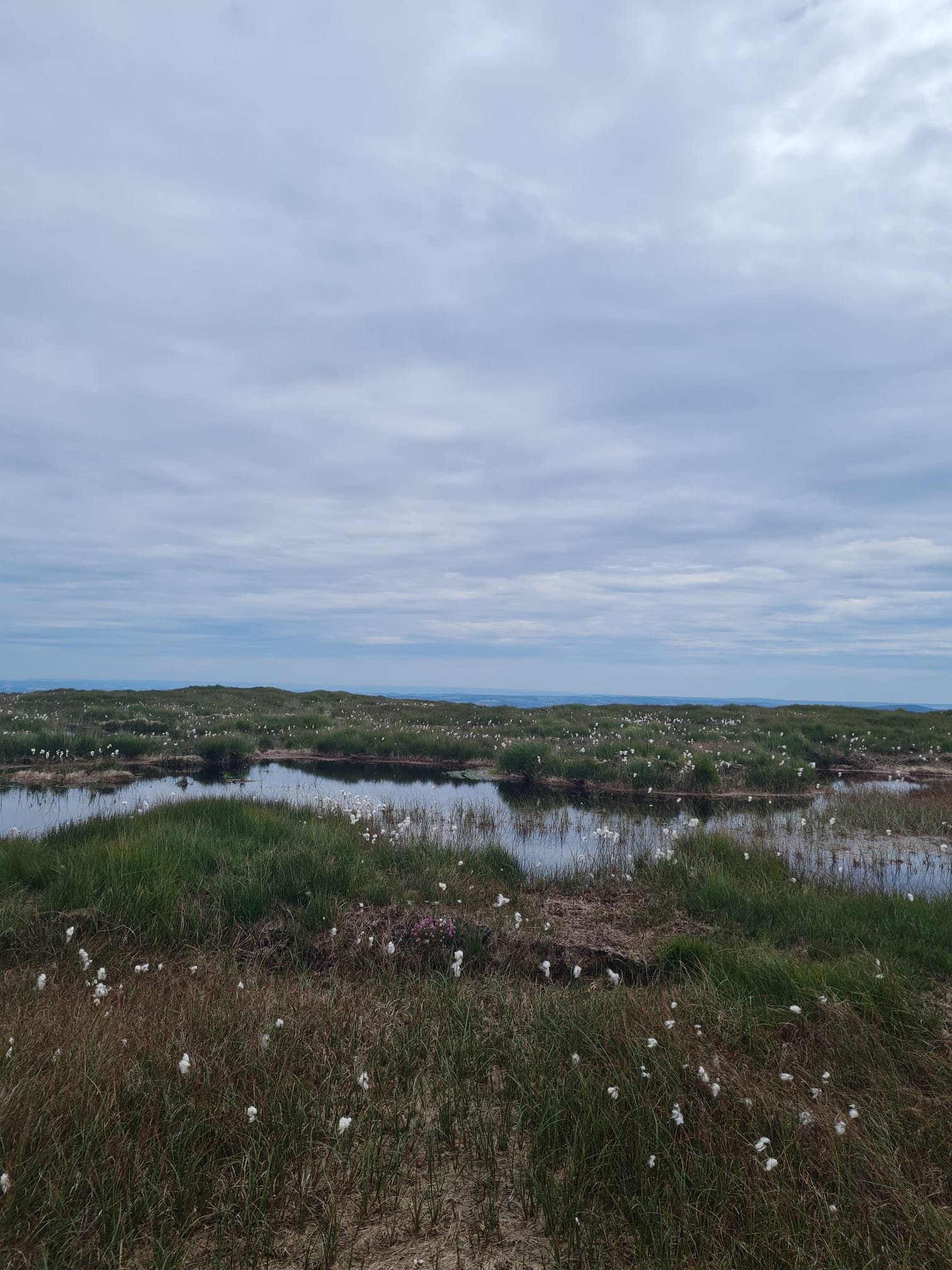
Water-filtering, grazing-supporting, carbon-storing, flood-reducing, history-preserving healthy peatlands.
They benefit everyone on Earth. Here’s why:
Why peatlands?
Peatlands are wetland landscapes shaped by waterlogged soils formed of dead and partially decaying plants: peat.
A key component of peat, and therefore peatlands, are sphagnum mosses. These tightly-growing, water-retaining plants form blankets across the landscape, creating conditions that prevent the decay of plant material. Over time, this gets compressed and eventually forms peat, at an average rate of 1mm per year. This means it can take 1,000 years for one metre of peat to form.
The whole world benefits from peatlands being kept healthy. But in the UK’s South West particularly, they’re more than crucial. From the water in our taps that originally falls on Dartmoor to the generations of farmers grazing livestock on Exmoor, or days spent exploring the archaeology of West Penwith, all of us need peatlands more than we might know.
That’s because peatlands bring about innumerable benefits. As well as acting as natural carbon stores, rare wildlife habitats, archaeology havens, water filters, grazing land and recreation areas, healthy peatlands also increase resilience to climate change.
for water
Peat can hold up to 20 times its own weight in water, slowing the flow of water off landscapes & reducing flash flooding. Healthy peatland can also help to improve water quality, reducing the runoff of carbon into our rivers, streams & waterways. This vital water store benefits people, wildlife & farming, something that will only become more important with a changing climate & extreme weather events.
for the climate
Vast stores of carbon are found in the world’s peatlands due to the undecayed plants. Covering only 3% of the world’s land area, they store more than twice the carbon found in all the world’s forests. When peatlands dry out & degrade, carbon is lost to the air & waterways. By restoring & rewetting, we can help to reduce further emissions & create the conditions needed to sequester further carbon dioxide.
for people
From farming to family days out, peatlands underpin huge amounts of our social, financial & recreational daily lives. Many rely on these areas in the UK’s South West for grazing their animals, with thousands more visiting these wide open spaces on days out. By preventing further drying out & degradation, peatlands can survive & thrive into the future, providing so much more for all aspects of society.
for wildlife
Visit a healthy, wet, peatbog on a sunny day & you’ll be surrounded by insects, birds, reptiles & more, all reliant on this unique environment. From dunlin to dragonflies, snipe to snakes, restoring areas of peat bogs will transform dry, degraded areas into spaces that benefit wildlife by creating food sources & nesting habitats for years to come.
for plants
Insect-eating sundews, bobbing cotton grasses, mats of sphagnum moss; healthy peatlands are a haven for a range of plants reliant on these specialised environments. With many adapted to live in the wet, acidic conditions, they’re a place for plant lovers & vital for a range of animals, birds and insects too.
for our history
The peatlands of the UK’s South West are steeped in history. From the way people have shaped moorlands over the years through farming, mining & industry, to the records of our past contained in & on the peat itself. We work constantly to ensure this historical record is protected, preserved and enhanced into the future by restoration works.
“Occupying just 3% of the Earth’s land surface, peatlands are our largest carbon store on land. They are places where people derive clean water and food, and can act as buffers for environmental disasters, such as flooding. They are also of global significance for biodiversity with the majority of peatland species and habitats rare, threatened or declining.”
The challenge facing peatlands
To fulfil all these ecosystem services and be self-sustaining, peatlands must have suitable amounts of water present. Otherwise, these benefits are all lost.
In many areas peatlands have been drained, degraded, burned and had vast amounts of peat extracted. This leaves dry peat that is easily eroded, washed away and causes cracks to form. This impacts grazing ability, increases fire risk, reduces water quality and releases that incredible store of carbon back into the atmosphere. At a time when we’re all taking urgent steps to tackle the climate crisis, our peatlands are at risk of becoming a major driver of too much carbon dioxide, rather than a natural help.
With holistic, bold and urgent action to keep water on the landscape and the peat wet, we can help restore these incredible benefits of peatlands, for wildlife, people, farming and the climate.







